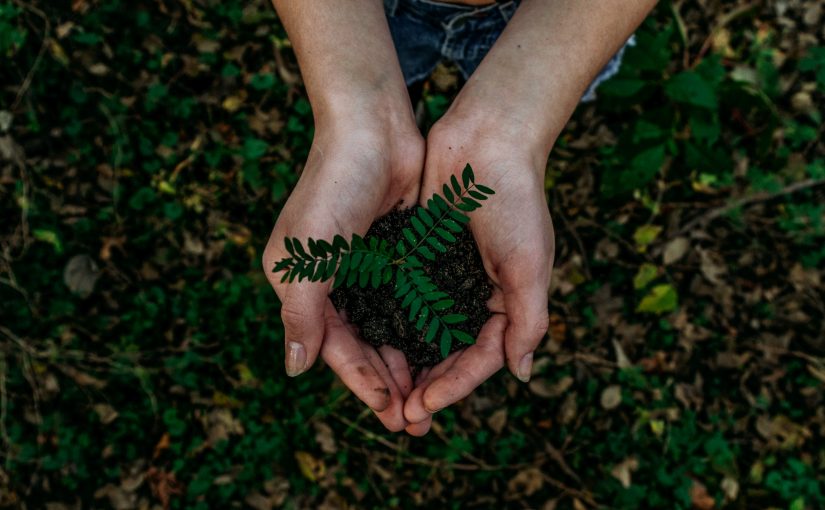Efforts to make the world more sustainable have been largely influenced by biotechnology, as was discussed in our last article. Companies such as Bright Biotech, Biobean and Holiferm are prime examples of this in the UK. However, it’s not just about the innovative technologies and products that biotech companies create. The biotech and healthcare industries must also lead by example and strive for greater sustainability in their operations and processes.
As more companies in these sectors recognise this, they are beginning to explore ways to reduce their environmental footprint and create a more sustainable future for all. This article will delve into some examples of how the biotech sector is evolving and examine the role of policymakers in incentivising this industry to change and innovate for sustainability.
Sustainability in the Healthcare and Biotech industries: Current Initiatives and Future Directions
One of the issues of concern in the healthcare and biotech sectors is single-use plastics. For example, in the healthcare sector, the global use of plastics is estimated at 15 million tonnes per year. In Europe, it is estimated that 36% of the waste generated by this sector is plastics and even more worrying is that 42% of that is incinerated [1].
The NHS is one of the largest producers of healthcare waste and single-use plastics, with 11,300 tonnes of waste per day, of which 22.7% is plastic. Several initiatives tackle this problem, such as the Greener NHS programme and NHS sustainability commitments under Delivering a ‘Net Zero’ NHS programme. During 2019 and 2020, the actions implemented in this plan have removed 200,000 single-use plastic items waste from trusts, saved the system around £12,000 and reduced CO2 emissions by approximately 224 kt [2]
In 2015, a group of researchers from the University of Exeter estimated that worldwide, biological research institutions produce 5.5 million tonnes of plastic waste per year, equivalent to 1.8% of global plastic production [3]. Today, most research institutions are aware of the impact that generates single-use plastics and have taken action to reduce and reuse some materials. It is not always possible to reuse plastic material in laboratories as it brings with it the associated problem of contamination [4]. However, reducing the plastic unnecessarily bought, and the amount of plastic used in the different experiments is more feasible than reusing it. One of the most commonly used consumables in laboratories is plastic pipette tips, usually bought in plastic boxes of 96. Start-ups such as TipEasy are tackling this problem by developing an automated pipette tip-racking system which allows tip boxes to be refilled through a robotic device. This device will save a small biological facility about £100k yearly in pipette tips cost.
Another widely used consumable in scientific research is the foetal bovine serum (FBS). Its use dates back to around 1950, but in recent years has been questioned due to ethical issues and market challenges, leading to a search for new alternatives [6]. Bovine ocular fluid, sericin protein, human platelet lysate (HPL), and earthworm heat-inactivated coelomic fluid (HI-CF) are emerging as alternatives to using FBS. However, much research remains to be done to find a substitute that achieves the same results as FBS [6].
Some biotech companies are working to replace the use of animal-derived products. For instance, Manchester Biogel has developed a series of synthetic peptide hydrogels for cell culture. These hydrogels are highly reproducible, biocompatible and biodegradable [7]. Another company committed to this purpose is Bright Biotech. The company has developed a technology that uses chloroplasts to express valuable proteins (i.e. growth factors) in plants, thus contributing to the sustainability of the R&D sector [8].
If we talk about sustainability in research, there are many other factors to consider, such as the use of water and energy, greenhouse gas emissions, and chemicals [9]. Nowadays, initiatives are supporting the environmental sustainability of research, such as The Laboratory Efficiency Assessment Framework (LEAF) developed by University College London in 2018. LEAF is a programme that allows laboratories to become more sustainable through self-assessment using different tools in a user-friendly platform. These tools include calculators to estimate carbon and financial savings impact. Finally, laboratories are awarded a Bronze, Silver or Gold level depending on the number of sustainability actions they undertake [10].
From using renewable energy sources to developing more sustainable manufacturing processes, the biotech industry is starting to take steps towards a greener future. Many companies and institutions in the sector have implemented various initiatives dedicated to addressing the sustainability of their research. However, there is a need for an overarching public policy framework to achieve a solid commitment to sustainability at local and global levels.
International and national action for a sustainable future
Climate change’s unprecedented risks have pushed this topic to the forefront of international conversation. Governments and policymakers have identified the need to reduce carbon emissions and reach a “net-zero” goal by 2070 to avoid catastrophe. This goal was set out in the 2015 United Nations’ Paris Agreement, where nations set out targets to reduce global warming (originating from carbon emissions) to a limit of 2°C, with a more ambitious target of 1.5°C.
The UK, in particular, has often led the way among western countries in addressing climate change. In response to the climate agreement, a Committee on Climate Change was set up to inform on domestic actions the UK government must take to follow the agreement’s roadmap [11]. The immediate goals of the UK government around sustainability have been outlined in a series of policies, namely the government’s Clean Growth Strategy and the 25-year Environmental Plan [12, 13].
The Clean Growth Strategy highlights that it is necessary to mobilise more capital in sustainable projects and develop more innovative risk-sharing financial structures for investment in low-carbon technology. This is demonstrated by the government’s financial commitment to innovative technologies through the availability of public funding. Funds have been distributed through programmes such as the BEIS Energy Innovation Programme. Here, £20 million of new investment is dedicated to supporting clean technology early-stage funding and an extra £14 million for the Energy Entrepreneurs Fund.
In the 25-year environmental plan, two key outlined targets are maximising resource efficiency and minimising environmental impacts at end-of-life. To aid with these targets, the government has set out plans for a Bioeconomy Strategy, which will build on the UK’s strengths to ensure it develops a world-class bio-based economy by removing the dependence on finite fossil resources.
Within the frameworks set by both plans, adopting bioscience and biotechnology is a key consideration. In the Clean Energy Strategy, such solutions are proposed to overcome the challenges associated with bioenergy, waste, and land use. Moreover, among the explored potential pathways to reach 2050, one explored pathway is the emissions removal pathway, which entails biotech-based innovations such as greenhouse gas removal (GGR) technologies. Likewise, in the 25-year environmental plan, several active projects have sought to utilise biotechnology to address critical challenges. For example, the goal of zero avoidable plastic waste by 2042 is partially addressed by encouraging the development of bio-based plastic through the Bioeconomy Strategy.
On the ground, various public entities have been responsible for enacting the governmental roadmap towards net zero. Leading the way is the UK Research and Innovation (UKRI), a non-departmental public body that directs research and innovation funding. Importantly, the UKRI brings together UK-based research councils, including Innovate UK and Research England, and its partners to facilitate the application of the UKRI Environmental Sustainability Strategy [14]. The organisation aims to leverage its expertise to direct research and innovation towards addressing the main environmental sustainability challenges we face. Further, the organisation itself aspires to be net-zero by 2040.
This is only an example of government initiatives to combat global warming, but many more exist [15]. Nevertheless, we cannot dismiss the private sector’s role in overcoming the global warming threat. It is imperative that the regulatory frameworks and policies put in place continue to provide a platform for companies to explore novel technologies for better and more efficient sustainability. You can learn more about the role of the private sector and biotech innovations in the fight for sustainability here.
References
-
Innovate UK KTN. (2022). Towards more sustainable use of plastics in healthcare – Innovate UK KTN. [online] Available at: https://ktn-uk.org/news/towards-more-sustainable-use-of-plastics-in-healthcare/
-
Delivering a ‘Net Zero’ National Health Service. (2020). [online] Available at: https://www.england.nhs.uk/greenernhs/wp-content/uploads/sites/51/2020/10/delivering-a-net-zero-national-health-service.pdf .
-
ScienceDaily. (2015). Scientists call for reduction in plastic lab waste: Five and a half million tons of plastic being generated globally in the course of scientific research. [online] Available at: https://www.sciencedaily.com/releases/2015/12/151223221353.htm
-
RSB. (2015). How to reduce your lab’s plastic waste. [online] Available at: https://thebiologist.rsb.org.uk/biologist-features/how-to-reduce-your-lab-s-plastic-waste
-
Science. (2022). Fetal bovine serum—a cell culture dilemma. [online] Available at: https://www.science.org/doi/10.1126/science.abm1317.
-
Subbiahanadar Chelladurai, et al. (2021). Alternative to FBS in animal cell culture – An overview and future perspective. Heliyon, [online] 7(8), p.e07686.
-
Kilburn, L. (2022). Hydrogel Cell Culture – 3D Cell Culture Hydrogel | Manchester BIOGEL. [online] Manchester BIOGEL. Available at: https://manchesterbiogel.com/.
-
Bright Biotech | About. (2022). Bright Biotech | About. [online] Available at: https://www.brightbiotech.co.uk/about.
-
Sustainable laboratories A community-wide movement toward sustainable laboratory practices SUSTAINABILITY. (n.d.). [online] Available at: https://www.rsc.org/globalassets/22-new-perspectives/sustainability/sustainable-labs/sustainable-laboratories-report.pdf.
-
UCL (2020). UCL leads drive to make UK science and research more sustainable. [online] Innovation & Enterprise. Available at: https://www.ucl.ac.uk/enterprise/news/2020/dec/ucl-leads-drive-make-uk-science-and-research-more-sustainable.
-
Climate Change Committee. (2019). UK climate action following the Paris Agreement – Climate Change Committee. [online] Available at: https://www.theccc.org.uk/publication/uk-action-following-paris/.
-
The Clean Growth Strategy Leading the way to a low carbon future. (n.d.). [online] Available at: https://assets.publishing.service.gov.uk/government/uploads/system/uploads/attachment_data/file/700496/clean-growth-strategy-correction-april-2018.pdf.
-
A Green Future: Our 25 Year Plan to Improve the Environment. [online] Available at: https://assets.publishing.service.gov.uk/government/uploads/system/uploads/attachment_data/file/693158/25-year-environment-plan.pdf
-
UKRI Environmental Sustainability Strategy. (n.d.). [online] Available at: https://www.ukri.org/wp-content/uploads/2020/10/UKRI-050920-SustainabilityStrategy.pdf.
-
Google Books. (2013). The Necessary Revolution. [online] Available at: https://books.google.co.uk/books?id=pQF9DAAAQBAJ&printsec=frontcover&dq=The+Necessary+Revolution&hl=es-419&sa=X&redir_esc=y#v=onepage&q=The%20Necessary%20Revolution&f=false

